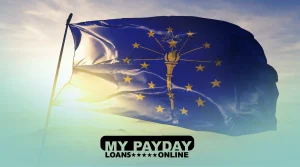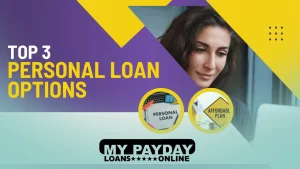Short-Term Loan Landscape

Short-Term Loans: Your Guide To Quick Financial Solutions
When unexpected opportunities arise or expenses strike, finding the right financial solution can feel like navigating a maze. Thanks to the short-term loans, you will receive the help in form of a practical bridge via which you can reach your immediate financial goals. No matter whether it is seizing a time sensitive business opportunity or managing temporary cash flow gaps or covering emergency medical bills, you can resolve all of them via short-term loans.
Let’s discuss the world of payday loans online to empower you with the required knowledge to make informed decisions about your financial future. Ready to discover your optimal short-term financing solution? Let’s dive in.
What Are Short Term Loans?
Short-term loans are financial products that are designed to provide users a quick access to smaller amounts of money. These loans are typically to be repaid within a few weeks to a few months. They are not at all like traditional bank loans. It is because these loans offer streamlined application processes and faster approval times. That’s why they are an attractive option for the borrowers to address their urgent financial needs with ease and preserve their mental health.
Key Features of Short-Term Loans
The various features a user can enjoy with the short-term loans are:
Quick Processing
The applications are quickly processed after the team receives the application. It helps the user as they will get to know on time whether their application is approved or not.
Flexible Loan Amounts
We offer flexible loan amounts that range between $100 and $5000. So, users can apply for the required loan amount without any fuss.
Short Repayment Periods
The repayment periods generally vary between 2 weeks to 6 months. It means that the borrower has the ample time to repay the loan amount along with the interest fees.
Simple Requirements
There are no extravagant requirements while applying for the loan amount. The borrower must fulfill the basic eligibility criteria to avail the loans.
Online Application
The user must fulfill the online application to avail the loan amount. They can fill the application form at the comfort of their home.
It’s time to discuss the benefits associated with short-term loans.
Benefits of Short-Terms Loans
The various benefits associated with short-term loans are:
Fast Access to Funds
Thanks to cash advances, borrowers can meet unexpected expenses like medical bills, home repair bills, college fees, etc. Most applications are approved within a few minutes and funds are disbursed on the very same day.
Simple Application Process
The application process is pretty straightforward and can be filled online without any fuss. The documents required to be submitted are:
- Identity Proof
- Income Proof
- Proof of Residence
- Active Bank Account Details
Flexible Use of Funds
Borrowers can use short-term loans for various purposes including:
- Emergency expenses
- Vehicle repairs
- Bill payments
- Home repairs
- Medical expenses
- Bridging temporary cash flow gaps
It’s time to discuss how a borrower can apply for a short-term loan.
How to Apply for a Short-Term Loan
The user can apply for the no credit check loans by following these steps:
Step 1: Prepare the Required Documents
You must gather all the necessary documentation before proceeding towards loan application. It includes
- Valid government-issued ID
- Bank statements
- Proof of income or recent pay stubs
- Lease agreement or utility bill for address verification
Step 2: Compare the Lenders
You must take time to research among the available lender options to find the best terms:
- Read customer reviews
- Review the fees and interest rates
- Carefully review the loan terms and conditions
- Verify the credentials and license of the lenders
Step 3: Submitting the Online Application
Once you complete the above discussed steps, you must complete the online application process by:
- Filling the personal and financial information
- Uploading the required documents
- Carefully reviewing the loan terms
- Accepting the loan offer if the terms are suitable for you
Let’s now discuss the important consideration for the borrowers before applying for the short-term loan.
Important Considerations Before Taking a Short-Term Loan
The various important considerations a borrower must follow while applying for the loan are:
· Interest Rates and Fees
It is true that short-term loans often carry higher interest rates when compared to traditional loans. It is because of their convenience and accessibility. That’s why the borrower must carefully review:
- Origination Fees
- Annual Percentage Rate (APR)
- Early Repayment Fees
- Late Repayment Penalties
· Repayment Capacity of The Borrower
The borrower must carefully evaluate the following factors before accepting the loan. They are:
- They must calculate their monthly budget accordingly after taking the loan.
- They must ensure that they can meet the repayment guidelines.
- They must consider their upcoming expenses.
- They must prepare a contingency plan for the future emergencies.
· Alternative Options
They can consider following alternatives before opting for short-term loans:
– Credit Card Advances
– Personal Savings
– Loans from friends or family
– Emergency assistance programs
Contact Us for More Information
Have questions related to our short-term loan options? Our friendly customer team is always available to help you. Connect with us at:
Phone: +1-929-220-9286
Email: [email protected]
Live Chat: Available 24*7 on our website
Apply now for short-term loans and receive instant decisions on your applications. Our dedicated team is always available to guide you to find the right financial solution for your overall needs.
Frequently Asked Questions
Both taking loans through banks and credit unions have their advantages. If you’re looking for larger amounts, banks are the way to go. And for smaller loans credit unions offer better rates.
When neither a bank nor a credit union can offer you a loan, you can always turn to online lenders. Some of them offer amounts as high as $35,000 with flexible repayment terms and completely transparent lending practices.
While there is no set minimum since borrowing through various platforms accommodates all types of scores.
It is hard because approvals take into account your income, debt-to-income ratio, credit score, and current economic conditions. By improving these factors, you’ll have a better chance of securing debt-consolidating loans.
You may opt to get cash immediately by applying for an online loan. Going for options that skip credit score checks, require minimum documentation on your part, and don’t need collateral are the ones you can choose. All you’ll have to do is apply through our loan application portal.




